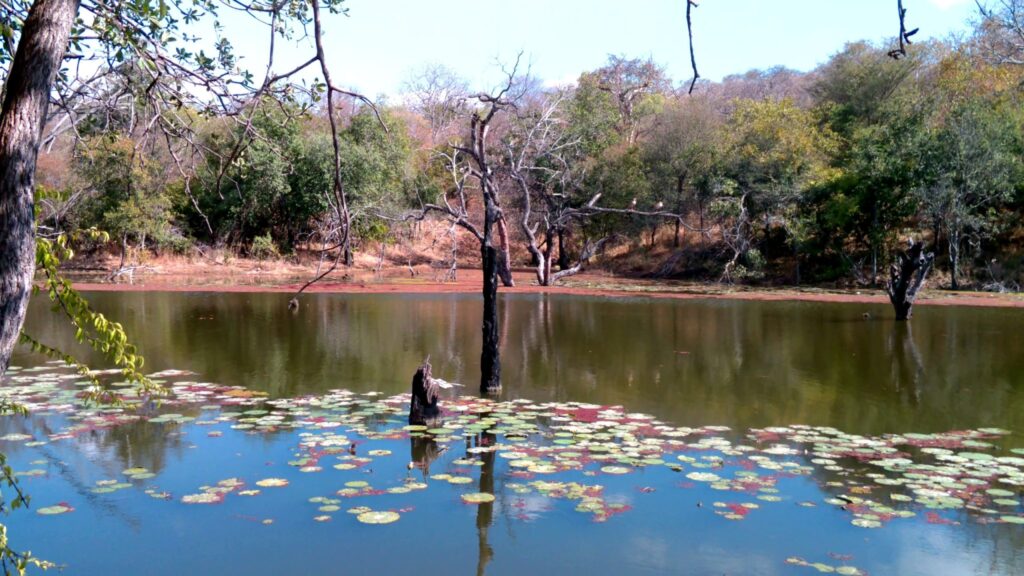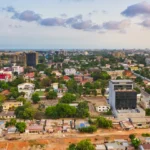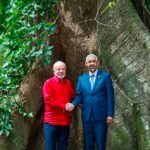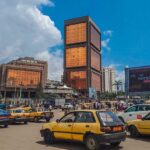Around her, the Kasibo Nutrition Garden buzzes with life-women tending to crops, the sound of water trickling from a hose fed by a nearby weir, and bees flitting between flowering pawpaw trees. For Ncube, this garden is more than just soil and water. It is survival, dignity, and the promise of a better future for the grandchildren she is raising.
“Life was very hard; their mothers left them with me, and I struggled to feed them. But this garden changed everything,” Sheila Ncube.
“Now I can put food on the table, and sometimes I even sell the surplus at the market,” she says, pausing to wipe sweat from her brow.
The garden, tucked in the heart of the revived Kasibo wetland, is part of a broader climate resilience effort that has become a beacon of hope in Zimbabwe’s drought-stricken Matabeleland North region.
Once a degraded and dying wetland, trampled by livestock and drained by ignorance, Kasibo has been resuscitated through the Kasibo Wetland Integrated Catchment Management Project, a community-led initiative supported by the Environmental Management Agency (EMA), World Food Programme (WFP), USAID, the people of Japan, World Vision Zimbabwe under the Food Assistance for Assets (FFA) programme.
At the heart of this transformation is water secured through hard-earned community effort.
“When I was born in 1966, the wetland was alive and active,” recalls village head Zwela Nyathi. “But over time, people left their cattle to graze and trample it, and it degraded. When EMA came with a programme to resuscitate wetlands, we fenced it off. Soon, water began to gush out again just like in old days.”
What began as a conservation effort has evolved into a comprehensive climate adaptation model, with key components including catchment management, beekeeping, aquaculture, water harvesting, a nutrition garden, orchard, and wetland core protection.
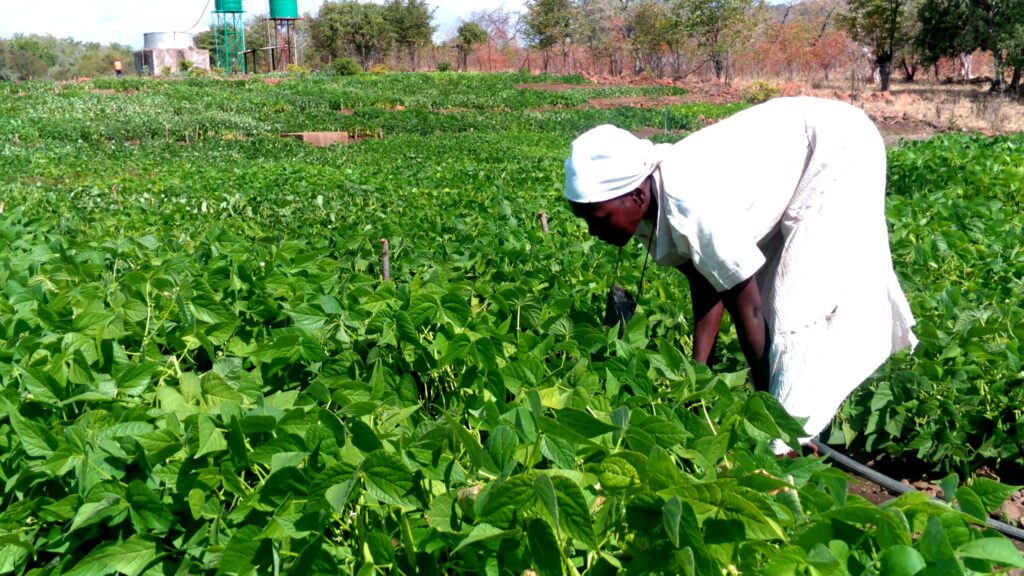
“Everything here revolves around this wetland,” says Nyathi, standing beside the weir dam. “Without it, there would be no water, no garden, no livestock, nothing.”
In a region increasingly plagued by erratic rainfall and prolonged dry spells, the wetland has become a lifeline.
“Our fields gave us nothing during the drought,” says Elizabeth Sibanda, a 43-year-old mother of three and a member of the nutrition garden project.
“But this two-hectare garden gave us food and water. We grow vegetables like tomatoes, onions, beans, carrots, beetroot and maize. And because we don’t rely on rain-fed agriculture anymore, we plant all year round.”
Water from the wetland also sustains over 1,500 cattle in the area.
Zwela Nyathi, village head: “We didn’t lose many livestock during the El Niño drought because there was enough water. Our weirs and garden were our salvation.”
Bent over with age but strong in resolve, 61-year-old Jessie Nyoni, one of the village elders, remembers the backbreaking work — digging, lifting stones, and clearing rocky ground under the sun to build the weir dams in Kasibo, now harnessing the wetland’s rejuvenated waters.
“We worked together, hour after hour, because we knew the wetland held our future,” she says, her voice a blend of pride and weariness.
For decades, Kasibo villagers watched their wetland dry up, taking with it the fertile soil, grazing pastures, and consistent water supplies they once relied on. Now, thanks to the Kasibo Wetland Integrated Catchment Management Project, hope is flowing back- literally. The small dams, built by villagers like Nyoni, are collecting water channeled from the revived wetland upstream, securing livelihoods once on the edge of collapse.
The garden project, a grassroot response to the harsh realities of climate change, is transforming the community’s resilience to drought. Where cracked soils once baked under relentless sun, vegetable gardens now thrive.
Of the 40 members involved in the project, 30 are women. Their presence is deliberate and strategic.
“Women bear the brunt of climate change,” says Gladys Sibanda, a mother of four. “Before the garden, we used to cut thatching grass to survive, but it stopped growing due to droughts. Now we are economically independent. I’ve bought goats, household utensils, and can pay school fees.”
The project has created a ripple effect of empowerment. Women have formed savings clubs, bought livestock, and invested in their families. Elderly people and widows like Ncube have found renewed purpose and the means to support vulnerable dependents.
“This garden has given us back our lives,” says Madzimai Fungai, a widowed mother of seven. “We are grateful. Before, we were trapped in poverty. Now we have hope.”

The wetland doesn’t just grow food; it feeds bees. Within the lush wetland forest, a community-run beekeeping project thrives with 22 hives. The bees forage from flowering trees and vegetables, producing honey that is sold for income.
The nearby orchard, dotted with pawpaw, mango, lemon, and guava trees, contributes to the community’s nutritional needs. Wild berries also grow in the vicinity, making the area a rare green oasis in an otherwise dry landscape.
“The project has changed our community,” Elizabeth explains. “We no longer see children with kwashiorkor or stunted growth. They eat well-rounded meals from the garden. We even supply vegetables to our local school for the feeding programme.”
Wetlands are critical not just for biodiversity, but for climate regulation, water purification, and carbon sequestration.
According to the Zimbabwe Environmental Law Organisation (ZELO), the degradation of wetlands in Zimbabwe is driven by urbanisation, illegal settlements, agricultural expansion, and pollution. Industrial effluent and sewage leaks further choke these fragile ecosystems. Weak enforcement of environmental laws compounds the problem, while communities often lack knowledge about the critical role wetlands play in climate and water systems.
Michelle Chitando, Climate Change and Energy Programme Lead at ZELO, says reversing this trend requires a multi-pronged approach.
“We need policy reforms to strengthen enforcement, raise awareness on the value of wetlands, and invest in restoring degraded sites,” she explains. “Enhanced monitoring using drones or satellites can help detect illegal encroachments in real time, while public awareness initiatives can drive grassroots wetland protection.”
Sustainable wetland management is directly tied to climate adaptation, she says.
“Wetlands are natural flood controllers, absorbing excess rainfall. They recharge groundwater, buffer communities from droughts, store carbon, and protect biodiversity,” says Chitando. “When we sustainably utilize wetlands, we are investing in food security, water security, and disaster resilience.”
Zimbabwe’s wetland governance is anchored in its Constitution, Section 73 and the Environmental Management Act, which prohibits draining or reclaiming wetlands without an Environmental Impact Assessment (EIA). Statutory Instrument 7 of 2007 further regulates projects near wetlands. Zimbabwe is a party to the Ramsar Convention and adopted the National Wetlands Policy (2022) to strengthen protection and restoration.
Despite these laws, the country faces critical challenges. In 2023, the Environmental Management Agency reported that 82% of wetlands were moderately or severely degraded, with Harare losing 50% of its wetlands since 2000 due to construction. With only 18% remaining in a relatively undisturbed state, this represents a significant loss of wetland ecosystems in the country.
Projects like Kasibo are reversing the trend, showing what communities can achieve through hands-on restoration. The wetland’s revival is clear proof that local action, backed by support and resources, can build resilience against climate shocks.
Michelle Chitando: “What is happening in Kasibo shows that restoration is possible. But it requires community involvement, government support, and consistent policy implementation.”
In line with its Ramsar Convention commitments, Zimbabwe has identified 7 sites as major national wetlands. These include Lake Chivero (Zvimba), Cleveland Dam (Harare), Middle Zambezi / Mana Pools (Hurungwe), Victoria Falls National Park (Hwange), Chinhoyi Caves (Makonde), Driefontein Grasslands (Gutu, Chikomba, Chirumhanzu) and Monavale Vlei (Harare). In total, these sites cover 453,828 hectares and are protected by several pieces of legislation, including the Constitution, Environmental Management Act and several regulations.
With global wetland loss exceeding 35% since 1970, Zimbabwe will host the 15th Conference of the Parties to the Ramsar Convention (COP15) from July 23–31, 2025. The summit will bring together international stakeholders to discuss wetlands’ role in climate adaptation, with projects like Kasibo expected to feature among case studies of nature-based solutions.
Plans are underway to stock the weir dams with fish, adding aquaculture to the community’s growing portfolio. It’s part of a broader push toward value addition and local economic development.
From villagers rebuilding weirs by hand to women harvesting honey and children eating fresh vegetables, Kasibo’s wetland revival is changing how the community survives drought.
Back in her garden plot, Ncube smiles as her grandchild runs up with a handful of fresh carrots. “We’re no longer just surviving,” she says. “We are living again.”

